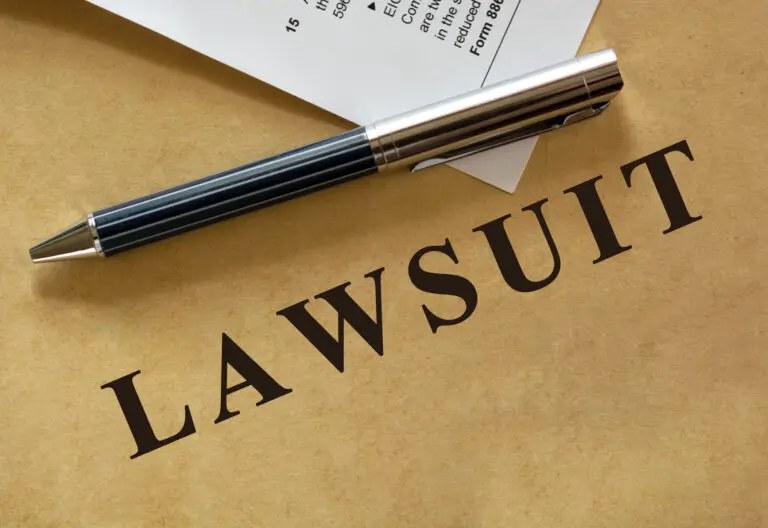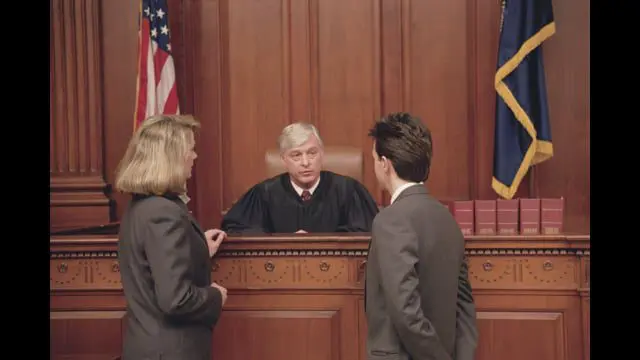The protection of intellectual property is a cornerstone of innovation and creativity in our modern economy. As of January 2025, the landscape of intellectual property law continues to evolve, reflecting the rapid pace of technological advancement and the changing nature of creative expression. This comprehensive guide aims to provide a thorough understanding of the fundamental concepts of intellectual property protection and the strategies available for safeguarding creative assets.
At its core, intellectual property refers to creations of the mind, such as inventions, literary and artistic works, designs, symbols, names, and images used in commerce. The legal framework surrounding intellectual property is designed to grant creators and inventors exclusive rights to their works for a specified period, thereby incentivizing innovation and creative expression. The four main types of protección de la propiedad intelectual are patentes, derechos de autor, marcasy secretos comerciales.
Patents provide inventors with the exclusive right to prevent others from making, using, or selling their invention for a limited period, typically 20 years from the filing date. To obtain a patent, an invention must be novel, non-obvious, and useful. The patent application process involves a detailed disclosure of the invention to the United States Patent and Trademark Office (USPTO). This disclosure becomes public after a certain period, contributing to the body of technical knowledge available to society.
En patent system is not without controversy, particularly in rapidly evolving fields such as software and biotechnology. Critics argue that patents can sometimes stifle innovation by creating patent thickets – dense webs of overlapping intellectual property rights that companies must navigate to commercialize new technology. Proponents, however, maintain that patents are essential for encouraging investment in research and development by providing a temporary monopoly on new inventions.
One emerging trend in patent law is the increasing focus on standard-essential patents (SEPs). These are patents that cover technologies essential to industry standards, such as wireless communication protocols. The licensing of SEPs has become a contentious issue, with debates over what constitutes fair, reasonable, and non-discriminatory (FRAND) licensing terms. As technology becomes increasingly interconnected, the resolution of SEP disputes will play a crucial role in shaping the future of innovation.
Copyrights protect original works of authorship, including literary, dramatic, musical, and artistic works. Unlike patents, copyright protection is automatic upon creation of the work, although registration with the U.S. Copyright Office provides additional benefits, such as the ability to sue for infringement and to recover statutory damages. Copyright protection generally lasts for the life of the author plus an additional 70 years.
The digital age has presented significant challenges to copyright law, particularly with regard to online piracy and the fair use doctrine. The rise of artificial intelligence has further complicated matters, raising questions about the copyrightability of AI-generated works and the potential infringement of copyrighted materials used to train AI systems. As of 2025, courts and legislators continue to grapple with these issues, seeking to balance the rights of creators with the public interest in access to information and technological progress.
One area of copyright law that has seen significant development is the concept of transformative use. This doctrine, which falls under the broader umbrella of fair use, allows for the use of copyrighted material without permission if it is transformed into something new with a different purpose or character. Recent court decisions have expanded the scope of transformative use, particularly in cases involving digital technologies and artistic appropriation.
Trademarks protect words, phrases, symbols, or designs that identify the source of goods or services. Unlike patents and copyrights, trademark rights can last indefinitely as long as the mark remains in use and is defended against infringement. The strength of a trademark is often categorized on a spectrum from generic (which receive no protection) to fanciful (which receive the strongest protection).
In recent years, there has been an expansion of what can be protected as a trademark, including colors, sounds, and even scents. However, this expansion has also led to increased scrutiny of trademark applications to prevent the monopolization of common words or symbols. The rise of e-commerce has also presented new challenges for trademark law, particularly with regard to the use of trademarks in online advertising and domain names.
One emerging area of trademark law is the protection of trade dress, which refers to the overall visual appearance of a product or its packaging. As consumers increasingly make purchasing decisions based on the look and feel of products, companies are seeking stronger protections for their distinctive designs. Courts have grappled with balancing these protections against the risk of stifling competition and innovation in product design.
Trade secrets encompass confidential business information that provides a competitive edge, such as formulas, patterns, devices, or compilations of information. Unlike other forms of intellectual property, trade secrets are protected without registration, potentially lasting indefinitely as long as they remain secret. The protection of trade secrets has gained increased attention in recent years, particularly in light of high-profile cases of corporate espionage and the challenges posed by employee mobility in the knowledge economy.
En Defend Trade Secrets Act of 2016 created a federal cause of action for trade secret misappropriation, supplementing the existing patchwork of state laws. This legislation has provided businesses with additional tools to protect their confidential information, including the ability to seek ex parte seizures of property necessary to prevent the propagation or dissemination of trade secrets.
One of the most significant challenges in intellectual property law is striking the right balance between protecting the rights of creators and inventors and promoting innovation and competition. This balance is particularly delicate in the pharmaceutical industry, where patent protection provides incentives for costly drug development but can also lead to high prices for life-saving medications. The debate over patent reform continues, with proposals ranging from shortening patent terms for certain technologies to expanding the use of compulsory licensing in public health emergencies.
The globalization of commerce has necessitated a more harmonized approach to intellectual property protection. International agreements such as the Agreement on Trade-Related Aspects of Intellectual Property Rights (TRIPS) and the Paris Convention for the Protection of Industrial Property have established minimum standards for intellectual property protection among member countries. However, enforcement of these standards remains a challenge, particularly in countries with less developed legal systems or different cultural attitudes towards intellectual property.
One area where international cooperation has been particularly important is in combating counterfeit goods. The rise of e-commerce has made it easier than ever for counterfeiters to reach consumers directly, posing significant challenges for brand owners and law enforcement agencies. Efforts to address this issue have included increased cooperation between customs agencies, the development of new authentication technologies, and the imposition of greater responsibilities on online marketplaces to police counterfeit listings.
The intersection of intellectual property law and antitrust law has become increasingly complex, particularly in the technology sector. As companies amass large portfolios of patents and other intellectual property rights, there are concerns about the potential for anticompetitive behavior. Antitrust authorities have scrutinized practices such as patent pooling, cross-licensing agreements, and the assertion of SEPs for potential anticompetitive effects.
The rise of open source software y el creative commons movement has challenged traditional notions of intellectual property protection. These models promote the sharing and collaborative development of intellectual property, often with the goal of fostering innovation and creativity. While these approaches have gained significant traction, particularly in the software industry, they have also raised complex legal questions about licensing, liability, and the interaction with proprietary intellectual property systems.
Another emerging area of intellectual property law is the protection of traditional knowledge y genetic resources. Indigenous communities and developing countries have argued for greater recognition and protection of their traditional cultural expressions and genetic resources, which have often been exploited without compensation. International efforts to address these issues, such as the Nagoya Protocol on access and benefit-sharing, have sought to create a more equitable framework for the use of these resources.
The rapid advancement of biotechnology has presented unique challenges for the intellectual property system. Questions about the patentability of genes, stem cells, and other biological materials have sparked ethical debates and legal controversies. As of 2025, courts continue to refine the boundaries of what constitutes patentable subject matter in the life sciences, balancing the need to incentivize research with ethical considerations and the public interest.
En Internet of Things (IoT) has created new intellectual property challenges as everyday objects become connected and intelligent. The complex web of patents covering various aspects of IoT technology has led to concerns about patent thickets and the potential for patent wars similar to those seen in the smartphone industry. Additionally, the data generated by IoT devices raises questions about ownership and protection, blurring the lines between patent, copyright, and trade secret law.
El concepto de intellectual property valuation has gained increased importance as intangible assets comprise a larger share of company valuations. Accurate valuation of intellectual property is crucial for mergers and acquisitions, licensing negotiations, and litigation. However, the unique and often speculative nature of intellectual property assets makes valuation a complex and sometimes contentious process.
The rise of 3D printing technology has raised new questions about the boundaries of intellectual property protection. As it becomes easier for individuals to reproduce physical objects based on digital designs, issues of copyright and patent infringement have become more complex. The ability to easily share and modify 3D printing designs has also challenged traditional notions of authorship and originality in copyright law.
The intersection of intellectual property law and ley de protección de datos has become increasingly relevant in the digital age. The collection and use of personal data, often protected as trade secrets or subject to copyright, can conflict with individual privacy rights. As of 2025, legislators and courts continue to grapple with how to balance these competing interests, particularly in the context of big data analytics and artificial intelligence.
El concepto de moral rights, which protect the personal and reputational rights of authors, has gained increased attention in recent years. While moral rights are more extensively recognized in civil law countries, there has been a push for greater recognition of these rights in common law jurisdictions like the United States. This has led to debates about the appropriate scope of moral rights protection and its potential impact on industries such as film and software development.
The protection of intellectual property in virtual and augmented reality environments presents new legal challenges. As these technologies become more prevalent, questions arise about how to protect virtual creations, how to enforce intellectual property rights in virtual spaces, and how to handle issues of user-generated content that may infringe on existing intellectual property rights.
En tecnología blockchain underlying cryptocurrencies has also found applications in intellectual property management. Blockchain-based systems for registering and tracking intellectual property rights have the potential to streamline the registration process, reduce disputes over ownership and priority dates, and facilitate licensing and royalty payments. However, the integration of blockchain technology into existing intellectual property systems raises complex legal and technical questions.
In conclusion, the protection of intellectual property remains a critical and evolving area of law, central to fostering innovation and creativity in our increasingly knowledge-based economy. As technology continues to advance and new forms of creative expression emerge, the intellectual property system must adapt to provide appropriate protections while promoting the public interest in access to knowledge and cultural expression. By understanding the fundamental principles of intellectual property law and staying informed about emerging trends and challenges, creators and innovators can better navigate this complex landscape and protect their valuable intellectual assets.
- https://www.uspto.gov/patents/basics
- https://www.copyright.gov/
- https://www.uspto.gov/trademarks/basics
- https://www.law.cornell.edu/wex/trade_secret
- https://www.wipo.int/treaties/en/ip/paris/
- https://www.wto.org/english/tratop_e/trips_e/trips_e.htm
- https://www.americanbar.org/groups/intellectual_property_law/









